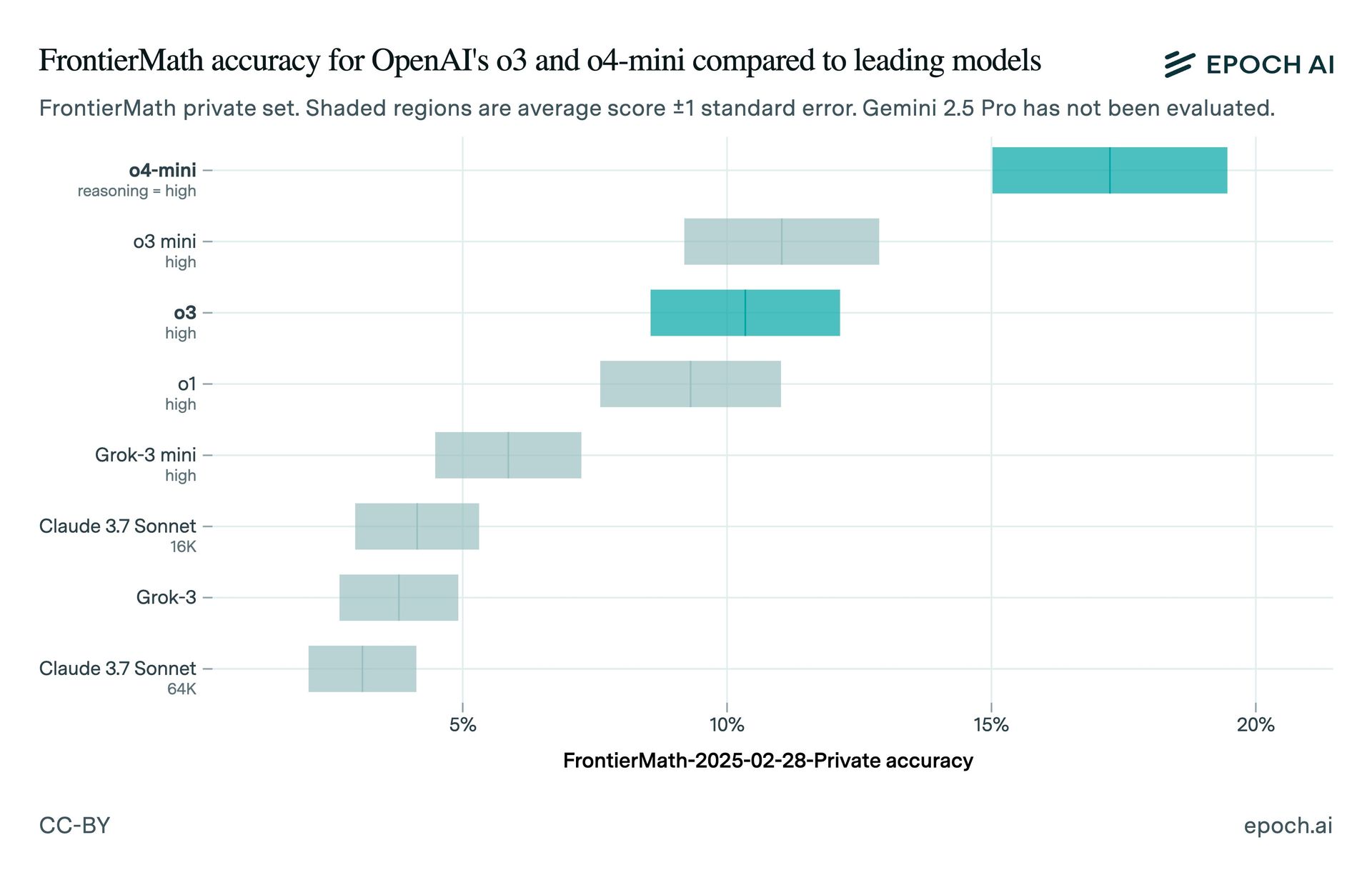OpenAI’s o3 AI model scored lower on the FrontierMath benchmark than the company initially implied, according to independent tests by Epoch AI, the research institute behind FrontierMath. When OpenAI unveiled o3 in December, it claimed the model could answer 25% of FrontierMath questions, significantly outperforming other models.
Epoch AI’s tests found that o3 scored around 10% on FrontierMath. The discrepancy may be due to differences in testing setups or the version of o3 used. OpenAI’s chief research officer, Mark Chen, had stated that o3 achieved over 25% in “aggressive test-time compute settings.” Epoch noted that OpenAI’s published benchmark results showed a lower-bound score that matches the 10% score Epoch observed.
The public o3 model is “tuned for chat/product use” and has smaller compute tiers than the version tested by OpenAI in December, according to the ARC Prize Foundation, which tested a pre-release version of o3. OpenAI’s Wenda Zhou explained that the production o3 model is “more optimized for real-world use cases” and speed, which may result in benchmark disparities.

OpenAI’s o3-mini-high and o4-mini models outperform o3 on FrontierMath. The company plans to release a more powerful o3 variant, o3-pro, in the coming weeks. This incident highlights the need for caution when interpreting AI benchmarks, particularly when they are used to promote commercial products.
The AI industry has seen several benchmarking controversies recently. In January, Epoch was criticized for not disclosing funding from OpenAI until after the company announced o3. xAI was accused of publishing misleading benchmark charts for its Grok 3 model, and Meta admitted to touting benchmark scores for a different version of a model than the one available to developers.





